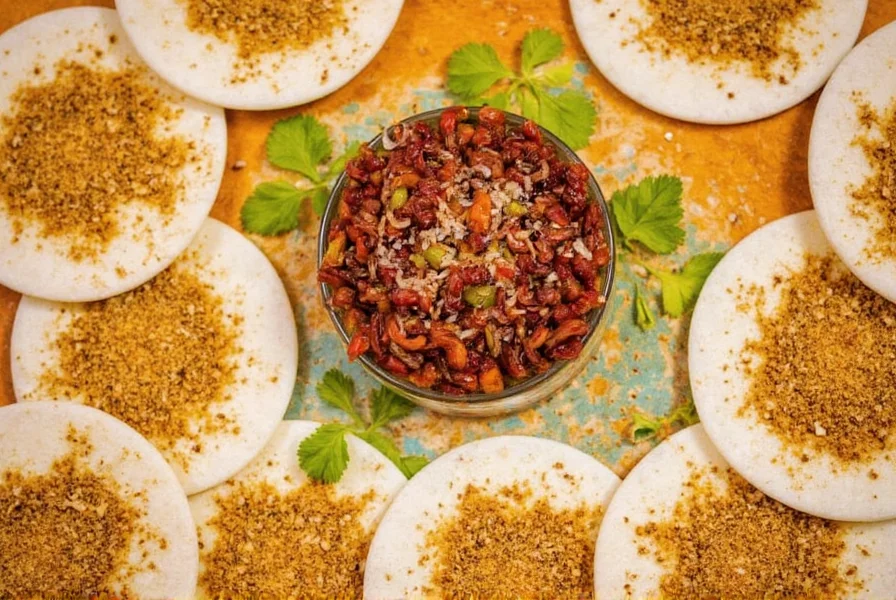Creole Magic: 7 Zesty Secrets Behind Louisiana Creole Seasoning That’ll Fire Up Your Kitchen!
If you’ve ever taken one bite of jambalaya and thought, "Wow, what’s in this?", then you’ve tasted the power of Louisiana Creole seasoning. This bold blend is more than just salt and pepper—it's a symphony of heat, herbs, and flavor that tells the story of a culture. Whether you're a home cook trying to bring some zing into your weeknight meals or a seasoned pro looking to elevate your Southern game, this article is your guide to unlocking the magic behind this iconic spice mix.
Table of Contents
- The Flavor-Filled History of Creole Seasoning
- What Makes It Tick? The Core Ingredients
- How to Use Louisiana Creole Seasoning Like a Pro
- Creole vs. Cajun: What’s the Difference?
- Buying Guide: How to Choose the Best Louisiana Creole Seasoning
- DIY Creole Seasoning: Make It Yourself!
- Top 5 Recipes You Can’t Resist with Creole Seasoning
- Final Thoughts: Keep It Spicy, Keep It Creole
The Flavor-Filled History of Creole Seasoning
Louisiana Creole seasoning isn't just a spice mix—it’s a cultural icon. Born from the melting pot of French, Spanish, African, and Native American influences in New Orleans, it reflects the diverse heritage of the region. Unlike its earthier cousin (Cajun seasoning), Creole seasoning developed as a more refined blend designed for urban kitchens, often incorporating imported spices like paprika and oregano.
Historically, Creole cooking was influenced by European culinary techniques and local ingredients. With access to ports, Creole cooks had a broader range of spices available compared to rural Cajun communities. Over time, the distinct blend we now know as Louisiana Creole seasoning emerged as a staple for seafood boils, gumbos, and étouffées.

What Makes It Tick? The Core Ingredients
Louisiana Creole seasoning is a harmonious blend of savory, spicy, and aromatic flavors. While recipes can vary, here are the most common ingredients found in traditional mixes:
- Salt – Base for flavor enhancement
- Black Pepper – Adds mild heat and depth
- Paprika – Brings color and subtle smokiness
- Oregano – Earthy herbaceous note
- Garlic Powder – Savory backbone
- Onion Powder – Adds sweetness and complexity
- Cayenne Pepper – Kick of heat (adjustable)
- Thyme – Delicate herbal touch
- White Pepper – Subtle warmth
- Mustard Powder – Optional tangy kick
| Ingredient | Flavor Profile | Function |
|---|---|---|
| Salt | Savory | Enhances all other flavors |
| Black Pepper | Peppery, sharp | Adds warmth and contrast |
| Paprika | Smoky, sweet | Color and depth |
| Oregano | Earthy, pungent | Herbaceous base |
| Cayenne | Spicy | Heat booster |
How to Use Louisiana Creole Seasoning Like a Pro
This versatile blend can be used far beyond gumbo! Here are some creative and unexpected ways to make the most out of your Creole seasoning:
- Rub for meats: Try it on chicken breasts, pork chops, or shrimp before grilling or baking.
- Popcorn twist: Sprinkle lightly over freshly popped kernels for a zesty snack.
- Veggie boost: Toss roasted vegetables (cauliflower, potatoes, okra) with oil and Creole seasoning for extra flavor.
- Homemade fries: Add to your fry seasoning mix for a Southern-inspired crunch.
- Boiled eggs: Mix with mayo or Greek yogurt for a spicy deviled egg dip.
- Dip enhancer: Stir into sour cream, ranch, or aioli for a spicy dipping sauce.
- Gravy kick: A pinch stirred into pan gravies adds instant Southern soul.
Creole vs. Cajun: What’s the Difference?
One of the biggest debates in Southern cuisine—Creole vs. Cajun seasoning—is more about geography and ingredient availability than personal preference. Let’s break down the differences:
| Aspect | Creole Seasoning | Cajun Seasoning |
|---|---|---|
| Origin | New Orleans, urban settings | Rural Louisiana (Acadian regions) |
| Main Heat Source | Cayenne pepper | Black pepper, garlic, onions |
| Typical Herbs | Oregano, thyme, paprika | Fewer herbs, more earthy notes |
| Use Case | Seafood, sauces, stews | Meats, grilled dishes, rustic fare |
| Flavor Notes | Bright, herby, smoky-sweet | Earthy, robust, deeply spiced |
Buying Guide: How to Choose the Best Louisiana Creole Seasoning
Not all Creole seasonings are created equal. Here’s how to find the perfect jar for your kitchen needs:
Things to Look For
- Natural ingredients: Avoid fillers like anti-caking agents or artificial flavors.
- Balance: Should taste like a full orchestra—not too salty, not too hot unless specified.
- Brand reputation: Trusted names often deliver consistent quality.
- Custom blends: Some brands offer “mild” or “spicy” versions—pick based on your heat tolerance.
- Packaging: Airtight shakers keep it fresh longer.
Top Recommended Brands
| Brand | Features | Best For | Heat Level |
|---|---|---|---|
| Tony Chachere’s Original Creole Seasoning | Classic blend with a cult following; ideal for gumbo, shrimp, and rice dishes | Traditionalists who want an authentic taste | Mild to Medium |
| Zatarain’s Creole Seasoning | Mild yet flavorful; great for families or beginners | Everyday use; kids-friendly | Low |
| Slap Ya Mama Cajun Seasoning (Creole version) | More aggressive heat with balanced herbs; comes in several spice levels | Heat lovers and adventurous eaters | Medium to High |
| The Spice Hunter Organic Creole Seasoning | Organic certified; clean ingredient list | Health-conscious cooks and organic enthusiasts | Medium |
| Penzeys Spices DIY Blend | High-quality individual spices; customizable intensity | Home chefs who love control and experimentation | Adjustable |

DIY Creole Seasoning: Make It Yourself!
Want total control over your spice level, salt content, and ingredient quality? Make your own at home! Here’s a simple but delicious recipe:
Basic Homemade Creole Seasoning Recipe
- 3 tbsp paprika
- 2 tbsp salt
- 1 tbsp black pepper
- 1 tbsp garlic powder
- 1 tbsp onion powder
- 1 tbsp dried oregano
- 1 tsp cayenne pepper (adjust to taste)
- 1 tsp dried thyme
- ½ tsp white pepper
- Optional: ½ tsp mustard powder
Instructions
- In a small bowl, combine all ingredients.
- Mix thoroughly using a whisk or spoon.
- Store in an airtight container away from light and moisture.
- Shake well before each use.
Pro Tip:
To deepen the flavor even more, toast whole peppercorns and dry herbs gently in a skillet before grinding them into powder. Just don’t burn them!

Top 5 Recipes You Can’t Resist with Creole Seasoning
Ready to put your seasoning to work? These five recipes showcase the versatility and flavor power of Louisiana Creole seasoning:
- Cajun Shrimp & Grits: Sear shrimp in butter and finish with a sprinkle of Creole seasoning for an easy, restaurant-quality dish.
- Cheesy Crawfish Casserole: Mix crawfish tails with cheese, breadcrumbs, and Creole seasoning for a crowd-pleasing baked side.
- Cajun Chicken Alfredo: Swap out traditional Italian herbs for Creole seasoning for a Southern twist on creamy pasta.
- Cajun Blackened Tilapia: Coat fillets with Creole seasoning and sear until crispy. Serve with lemon wedges and slaw.
- Creole Cornbread: Add a teaspoon of Creole seasoning to your cornmeal batter for a zesty upgrade to classic cornbread.
Final Thoughts: Keep It Spicy, Keep It Creole
Louisiana Creole seasoning is more than a pantry staple—it’s a passport to bold flavors, rich traditions, and unforgettable meals. Whether you buy it off the shelf or craft your own blend at home, this versatile seasoning has the power to transform ordinary dishes into extraordinary ones.
From seafood boils to popcorn upgrades, the applications are endless. And now that you’ve got the inside scoop—from history to homemade hacks—you’re ready to spice up your kitchen like a true Creole chef.
So go ahead—grab a jar, shake things up, and let your inner Southern chef shine!










 浙公网安备
33010002000092号
浙公网安备
33010002000092号 浙B2-20120091-4
浙B2-20120091-4